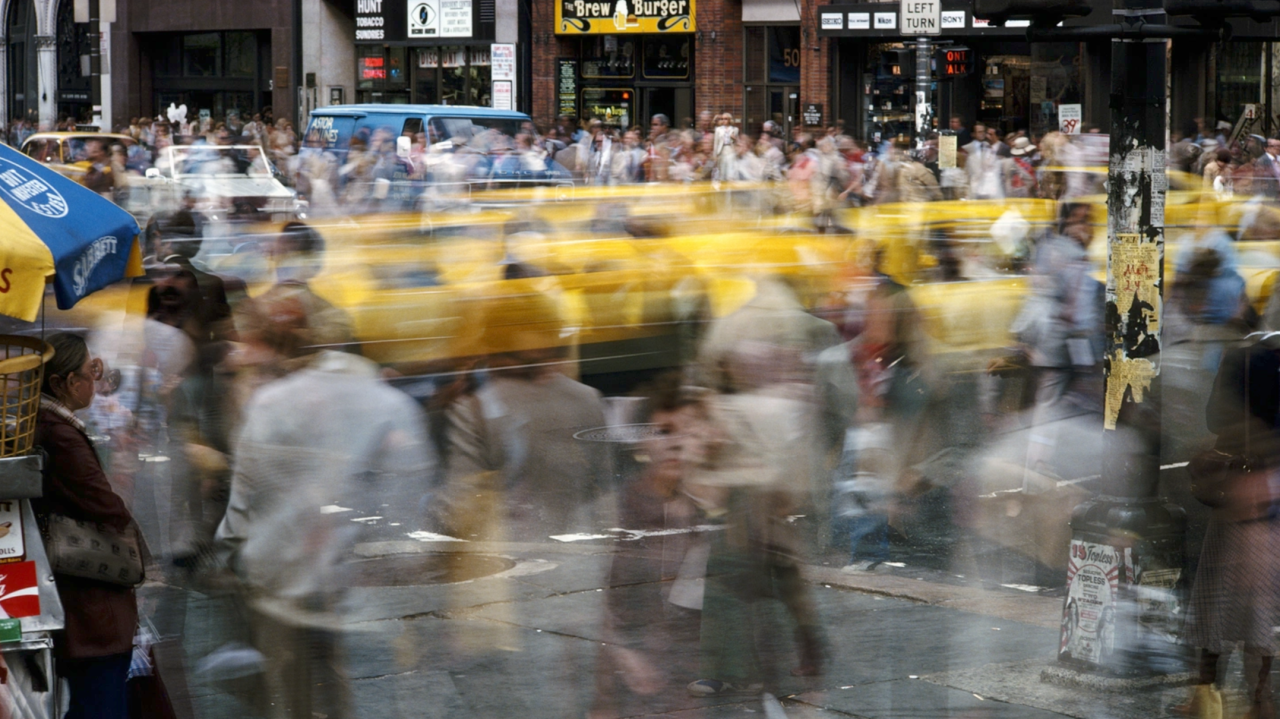The Pandemic Shows What Cars Have Done to CitiesTom Vanderbilt, April 24, 2020 (Photo: Ernst Haas/Ge
The Pandemic Shows What Cars Have Done to CitiesTom Vanderbilt, April 24, 2020 (Photo: Ernst Haas/Getty)Along streets suddenly devoid of traffic, pedestrians get a fresh look at all the space that motor vehicles have commandeered. The New York City streetscape has become a strange, inverted mirror image of the normal world. Suddenly, if you have a car, and actually have someplace to go, driving seems weirdly pleasant, almost rational: Congestion is rare, gas is even cheaper than usual, and parking is abundant. This is the Hollywood version of getting around Brooklyn: No matter your destination, you can find a spot right out front. During the coronavirus-induced lockdown, not many people are driving to work, shuttling kids on the school run, or sharing Ubers home from a Lower East Side bar. Vehicle traffic moves smoothly, now that it largely seems to consist of what traffic on urban streets arguably should consist of: the movement of goods to people, the movement of public transit, the movement of emergency responders and other essential services. For people on the sidewalks, the situation is much different. Those islands of street-side serendipity where friends once spotted one another and stopped to chat—clusters that, as the urbanist William H. Whyte observed, so often happened at corners—suddenly seem like miasmatic hot zones. Things that might have only slightly rankled before—the couple insisting on running side by side down a narrow sidewalk, the dog walker thoughtlessly unspooling a long leash, the large family strolling four abreast—are now sources of real anxiety. The usual strategies by which one pedestrian might avoid walking into another, such as ducking into the small patches of sidewalk space nestled between street trees and trash cans, are no longer sufficient. Also disconcerting is the sight of people walking in the street, or in bike lanes. At my local Trader Joe’s, a portion of the block-and-a-half-long line of would-be shoppers (stretched as it was by the six-foot intervals between them) extended into the street, close to traffic, presumably to keep the sidewalk free for walkers. Moments of crisis, which disrupt habit and invite reflection, can provide heightened insight into the problems of everyday life precrisis. Whichever underlying conditions the pandemic has exposed in our health-care or political system, the lockdown has shown us just how much room American cities devote to cars. When relatively few drivers ply an enormous street network, while pedestrians nervously avoid one another on the sidewalks, they are showing in vivid relief the spatial mismatch that exists in urban centers from coast to coast—but especially in New York. […] The status quo became untenable when a pandemic required six feet of social distancing between people—a distance wider than many cities’ sidewalks. In Canada recently, two performance artists with a group called the Toronto Public Space Committee drew attention to this problem by building what they called the “social-distancing machine.” It was a brilliant provocation. They used a large circle of plastic—like a hula hoop with a two-meter radius—to create a skeletal outline of government-mandated air rights around the person wearing it. One of the artists suspended it from straps on his shoulders and then tried to walk through the city, keeping everything and everyone else at a safe distance. In a video released by the group, the hoop-wearer is barely able to navigate Toronto’s obstacle-laden sidewalks, much less share those sidewalks with others. The social-distancing machine was actually inspired by an earlier device, the so-called Gehzeug, or “walkmobile,” created by Hermann Knoflacher, an Austrian civil engineer, in the 1970s. Knoflacher’s idea was to construct a wood-frame outline of a car that a pedestrian could wear to show how much extra space someone driving alone would consume. A cheeky, visually effective cri de coeur on behalf of cyclists and pedestrians, the Gehzeug was created at a time when even cities such as Amsterdam and Copenhagen—now renowned for their bicycle traffic—were turning their streetscapes over to the car. [Full article]Source: The Atlantic -- source link
#dynamics#collective#behavior#traffic#proxemics#covid19#crisis
